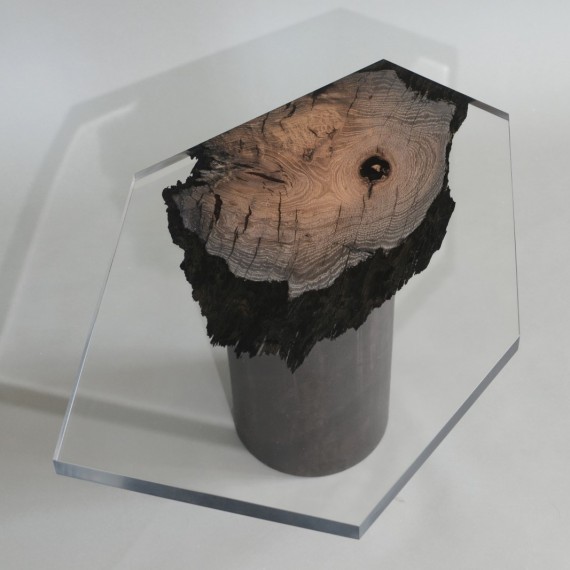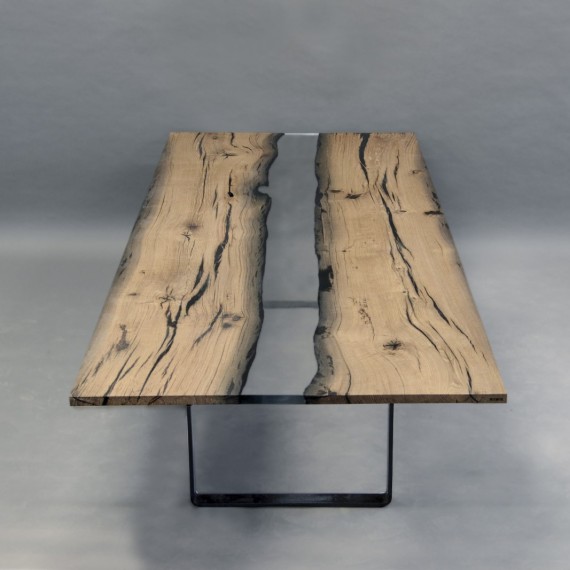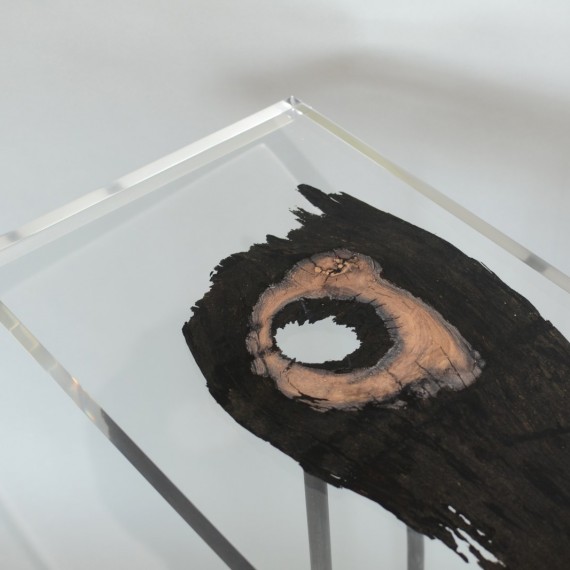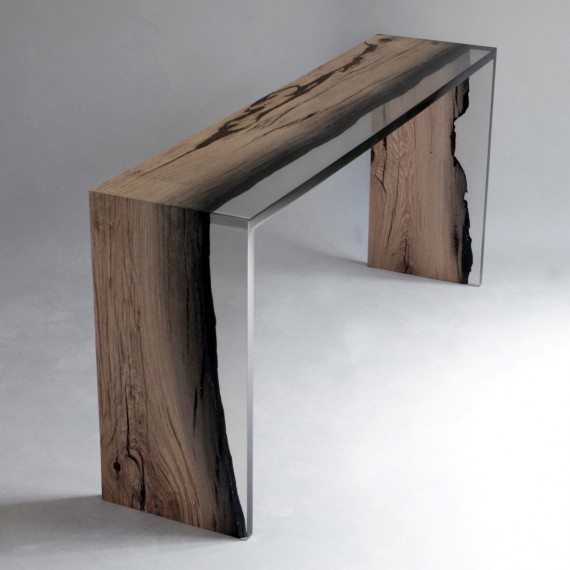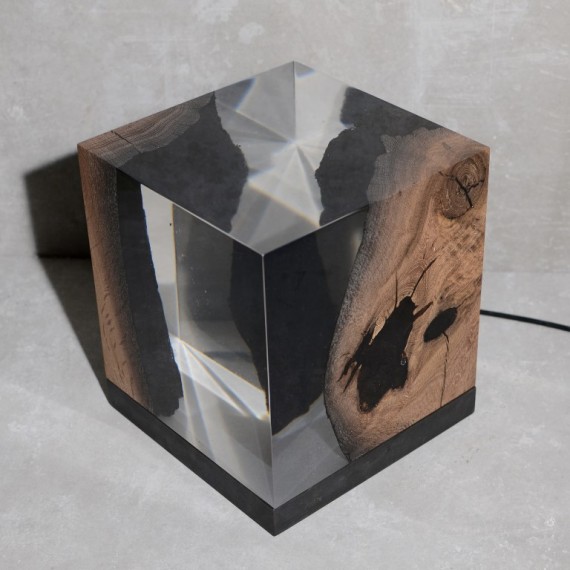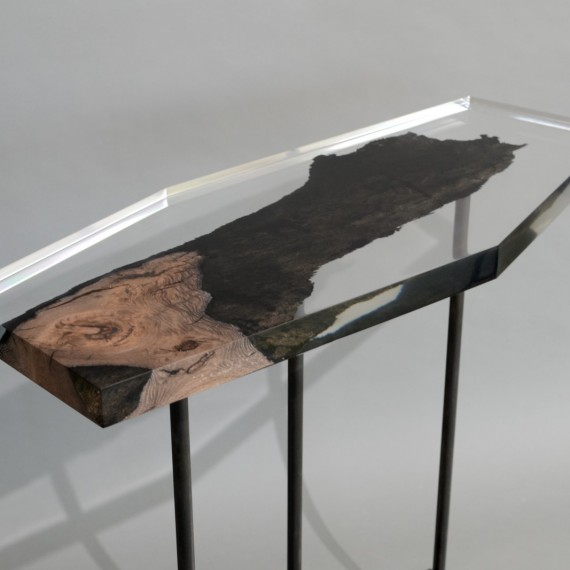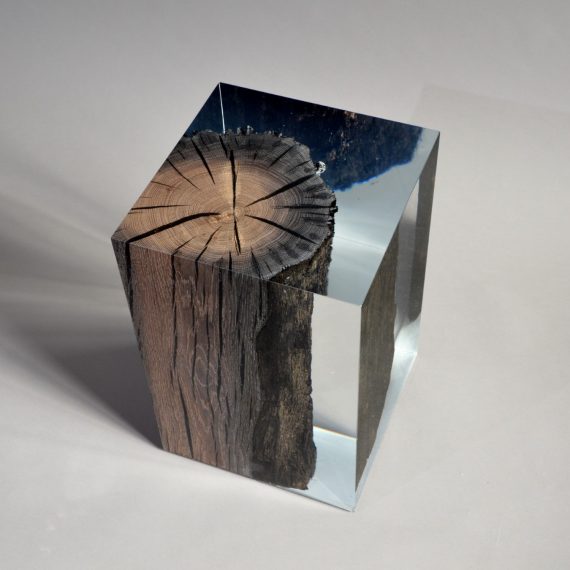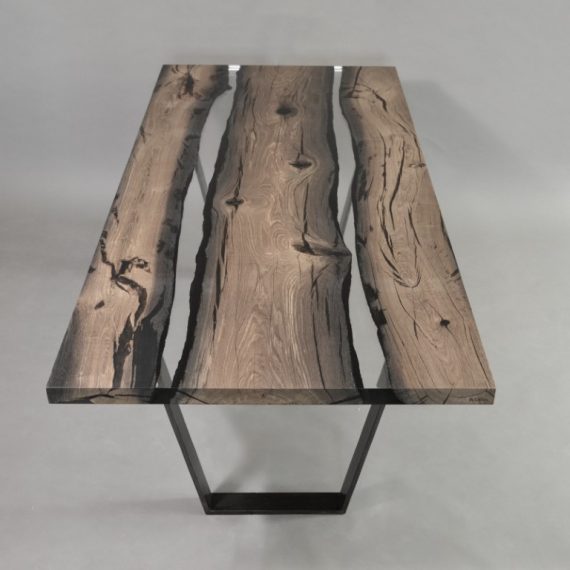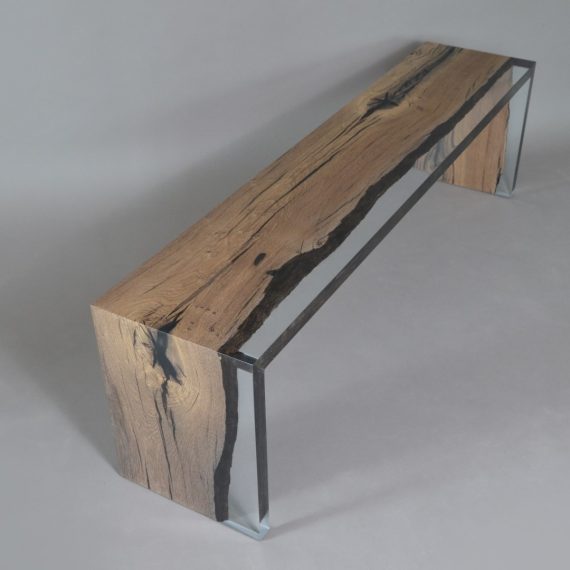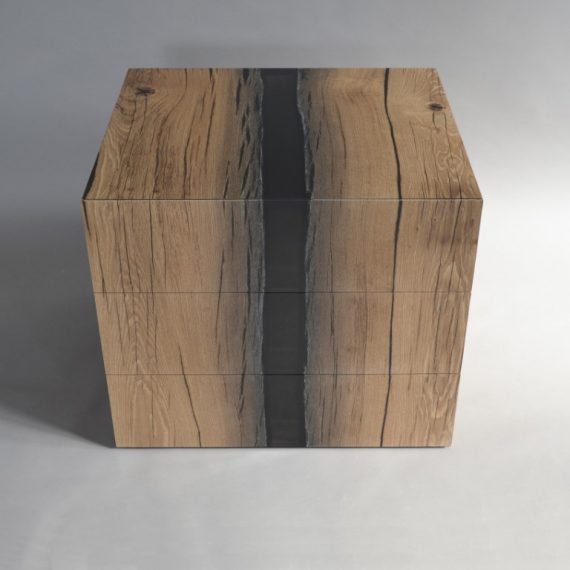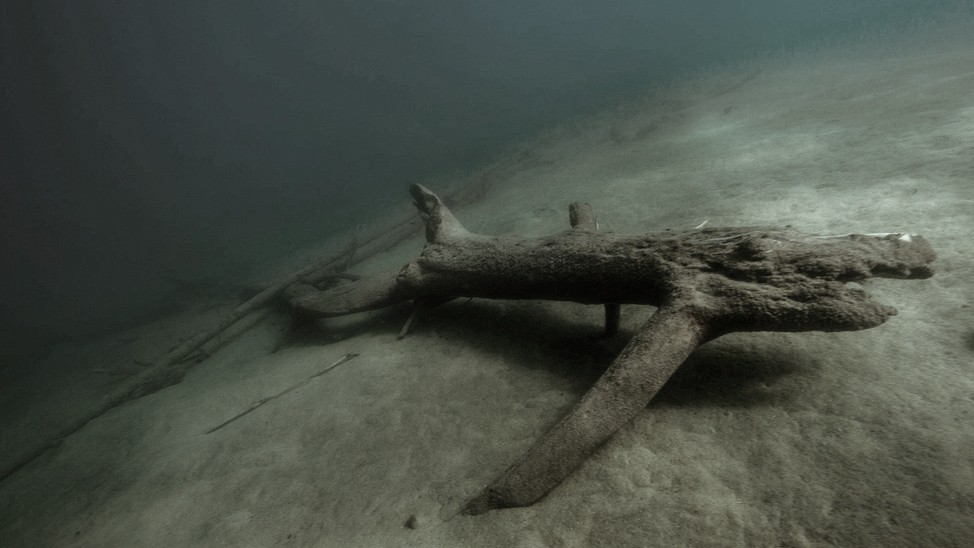
The Ancestral story of a submerged forest,
the flow of time and water revealed in the Woodgrain
“Nature gives to every time and season some beauties of its own.”
Charles Dickens
A wetland is an ecosystem that is saturated with water, which in some cases preserves materials such as wood for millennia.
Abonos is a Celtic name which indicates the “fossil” wetland wood type of some rare alluvial areas of the Alps, where minerals and water have started the semi-fossilization process of the submerged trees.
Despite its ancient origin, this precious material has been only recently rediscovered and studied.
Abonos™ is unique because, although it is the result of an underwater deposit, it manages to maintain its properties and at the same time increases its hardness, acquiring at the same time a distinctive and extremely fascinating appearance, that alcarol preserves using a transparent resin resembling the water in which the trees lay submerged through various eras.
We can find its deposits in some areas of the Alps, often subject to large-scale floodings. The trees, dragged and deposited in the riverbed by the force of the water, are buried by layers of gravel and sand. The long-time storage under low oxygen levels has started a genuine semi-fossilization process, still influenced by the substances present in the water. Currents bind the minerals and iron in the water with tannins in the wood, naturally colouring the wood in the process. This gives Abonos its uniqueness: the colours of a trunk can change from golden to black and the veining can create drawings through the chromatic scales.The color will create warm shades in contact with clay, cold ones in contact with gravel.
The tendency of wood to become darker idicates the increasing age of the trunks, as a matter of fact the black ones are the oldest. Some of them have more than 8000 years, others have hundreds years. Each of these trunks is different from the other and so it is impossible to find two of them with the same shades. These features of the color give a strong visual impact, that even without a scientific analysis, a watchful eye could easily understand the history of the trunk.
Also the process of wood desiccation is very complex, and despite great care, most of the raw wood is unsuitable for further processing.Understanding the process of conservation and manufacturing of this wood easily transmits the observer its value, rarity and importance. Each trunk is not only material for works of the highest attention and quality, but also the stunning result of the unique conditions that have created it over the millennia and a piece of history of the area from which it was taken.


